I recently purchased an older boat. Not long before the purchase, the previous owner had the wiring replaced.
All the workmanship seems to be in good order, with all connections and terminations made with Ancor crimped connectors and sealed in shrink tubing. All the wiring is the proper gauge (AWG) stranded wire.
The only problem is that the wire used was not marine-gauge tinned wire. I am wondering what the risks are to leaving it as it is. Clearly to rip it all out and do it again would be very expensive.
I am not using the boat that much and don’t intend a circumnavigation any time soon. If the connections are well made and the wire sheathing remains intact, what is my risk of wire corrosion with the un-tinned wire in a marine environment?
Steven Krenz,
Vilya, Catalina 25,
Corpus Christi, Texas
The matter of tinned wire being the only type accepted as “marine grade” is rather interesting. Ancor was perhaps the first vendor to the boating market to supply tinned copper wire and label it as “marine grade.” It was a brilliant marketing move because now many people think that tinned wire is the only legitimate wire to use on boats.
In fact, many boaters are of the belief that the American Boat and Yacht Council mandates the use of tinned wire in its electrical standards. Well, this whole matter falls into the maritime legend category.
First, the ABYC does not mandate the use of tinned wire its standards—never has. Second, the vast majority of production boat builders still use un-tinned wire in their electrical systems.
Is tinned wire better? Well, it is more corrosion resistant, but the truth is, the un-tinned wire has been used for years and provides a more-than-adequate service life in most cases.
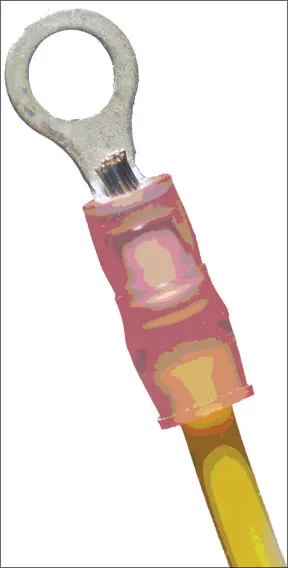
The trick to enhancing the corrosion resistance with un-tinned wire is simple: Be sure that the terminations on any cabling in your boat are hermetically sealed. Standard crimp connectors don’t do the job. They leave the wire ends exposed to moisture, and eventually corrosion will begin at the terminal and migrate into the conductor as the moisture tracks up the wire under the insulation via capillary action. By using heat-shrink crimp terminals or adhesive-lined heat-shrink tubing on conventional crimp connectors, you can effectively seal the ends of all the wire on your boat.
Without exposure to moisture or salt air, the un-tinned wire will last as long as the tinned. (A good online source for heat shrink products is www.nationalstandardparts.com.)
To determine if your wiring has been affected by moisture, cut off the terminal on a suspicious wire and strip back about a half-inch of insulation. If the wire is black, and not shiny pink, then corrosion has begun to migrate along the conductor. You’ll need to strip back the wiring until you find clean, pink copper. Usually this requires stripping back no more than an inch or so of insulation. Snip off the corroded wire and install a new terminal as described above.



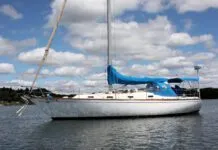

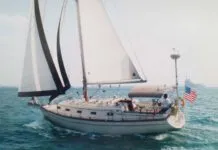
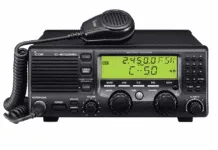



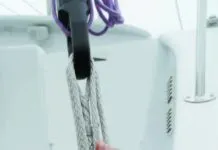
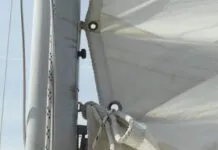

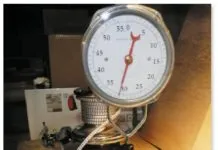
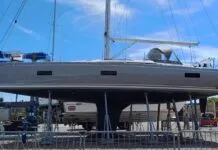
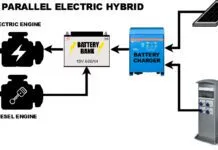



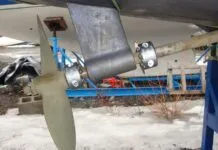

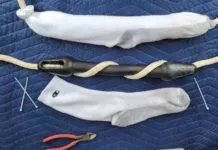



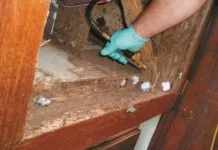

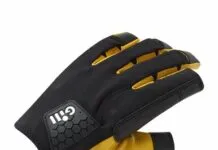





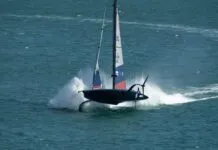
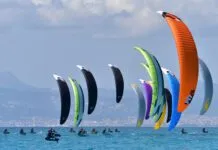
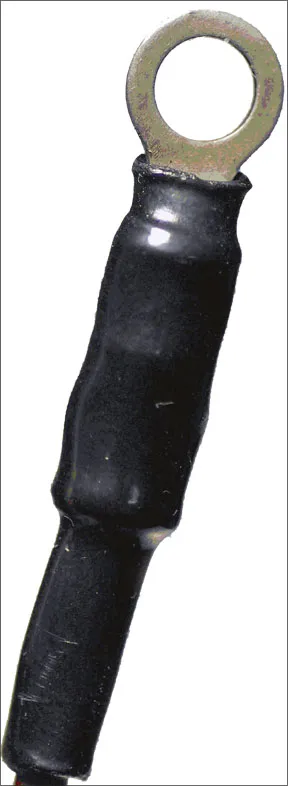




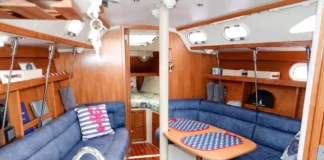
The fact that tinned wire isn’t a standard doesn’t make it a lesser choice.
So with extra precautions, untinned wire works. Ok. Or you could just go with the precaution of using tinned wire. As someone who has seen too much black copper wire, I have to say that Practical Sailor has just lost some credibility in my book
Don, the original Q to PS was is there a need to REPLACE all the new untinned wire with all connections and terminations made with Ancor crimped connectors and sealed in shrink tubing. I thought the PS response was very informative. Are you suggesting that Steven Krenz should replace all the wire?
I agree with Dan have seen too much black copper wire in the last 40 years why not plan for the elevatable.
Scott
Scotts Marine Services
It’s ‘practical sailor’ not ‘please spend all my money sailor’ . Nice article. You decide.
Agree 100 percent. After all, if you can’t survive an electrical failure onboard caused by a poor connection, probably best to stay ashore..
The tinning is a coating, is it not? If so, tinned or not, moisture and corrosion can migrate back along the copper from where it starts. And that starting point would be anywhere the tinning is breached, which would be where the wire is cut for a connector, whether a terminal or a splice or whatever. So the critical part of wiring, it seems to me, would be to make sure the connectors are well sealed at the bare wire ends and around the insulation. Moisture that can’t get in can’t migrate, and that would apply to tinned as well as to untinned wire.
Certainly, a tin coating can provide some additional protection in some scenarios, but multiple PS tests have showed it does not last any longer than properly installed copper strand. The sailor who starts tearing out perfectly good copper wiring under the assumption that tinned far better — and then not pay attention at the terminals — is throwing away time and money in our view. Our long-term testing indeed showed that more than coatings or treatments, the key to long life is to carefully seal any exposed or crimped wires. Here are just some of the many reports we’ve done on this topic over the years.
Wire test part I: https://www.practical-sailor.com/boat-maintenance/marine-wiring-are-the-pricey-options-worth-the-cost
Wire test part II: https://www.practical-sailor.com/boat-maintenance/marine-systems-wire-exposure-test-update
One of the books in our 5-volume marine electrical system ebook compiles and organizes the multiple comprehensive tests we’ve done on this. https://www.practical-sailor.com/product/marine-electrical-systems-complete-series
Even tinned wire does not guarantee freedom from corrosion. The cut ends are not tinned, and tin is just “better” than copper, not impervious. I have found using an anti-oxidative compound (originally developed to improve copper-to-aluminum connections) inside the crimp connector DRAMATICALLY improves the connection’s resistance to corrosion (heat-shrink with adhesive lining is still required). Also, the use of dielectric jelly in all quick-connects (1/4″ spade, bullet, even fancy “waterproof” connectors) helps keep moisture & corrosion out. Both items very cheap insurance for years of trouble-free connections.
I’ve repaired just as many tinned wire problems as I have bare copper in the boats I’ve worked on. The key is as Len and Darrell point out is the connections. If moisture can’t get in the wire and migrate under the insulation, the wire will not corrode. Once you cut tinned wire, the bare copper ends are exposed, therefore attracting corrosion of not properly sealed. I have a 1985 Boston Whaler that was factory wired with bare copper, but the terminal connections were all sealed with heat shrink and I have had zero issues with corrosion.
I figured this out on my own as I’ve been working on boats and repowering them with the latest lifep04 batteries and chargers. Every corroded wire that I’ve had to replace had old connecs exposing the end of the cable’s strands. A few times it a cut or chafe in the cable. I decided not to waste customers money on tinned and put my efforts into making sure the cables are waterproof. Every time I’ve explained my methods and then gave them the option of tinned they declined. Seems we’ve lost a lot of common sense with all this “information” of the internet available for everyone to voice an opinion. Claiming that something is required just because it’s more expensive is worse in the boating community than anywhere I’ve seen. People are relying on the internet instead of living action for knowledge. I was recently told by a terrestrial electrician that electrons flow in circles and that saltwater is safer than freshwater to swim in when high currents of electricity are leaked Into the water. When I told him otherwise he thought I was crazy. Get out and do it. Go to a boat yard and look for friendly people who are repairing to observe what breaks. Look at old derelict boats and see what lasts. Or watch it on YouTube and become an expert without ever having to get wet.
Oops, what I meant to say is that the terrestrial electrician thought that freshwater is safer than saltwater when electrical current is present. Freshwater is way more dangerous pertaining to stray electrical currents but most think saltwater is worse because they know salt is conductive. Anyways, getting more dangerous out there with power inverter wire gauge charts claiming that 4awg is good for 3000 watts at 12v and Amazon selling copper clad aluminum sometimes even without mentioning it.
Being totally green on the subject of tinned wires, I was seaching the net to figure out why it was supposedly such a must on a simple aux battery wiring of my…. ’89 VW Westfalia… 🙂 I see on this site that the art of common sense and solid experience hasn’t been lost, as opposite to so much books bla-bla. So I thank you for sharing, I’ll use this great info on my project, as well as on some current wiring issues & maintenance. And I’ll definitely drop a post about you guys on TheSamba.com, one of the best site on VW buses on the net.
Cheers,
-Nick
We are producing “Tin coated copper wire” and selling to LS Cable in Korea.
Now we want to export our product to worldwide.
We Offer Korean quality by Chinese price.
Please check our main items and prices.
Thickness Contain (%) Price (Exw)
CU SN U$/Kg
TA 0.16 98.28% 1.71954% 10.51
TA 0.18 98.47% 1.53140% 10.41
TA 0.254 98.50% 1.50000% 10.38
The price is based on Exw and standard export wooden packing charge included.
The prices are negotiable, changed by LME price and U$ exchange rate.